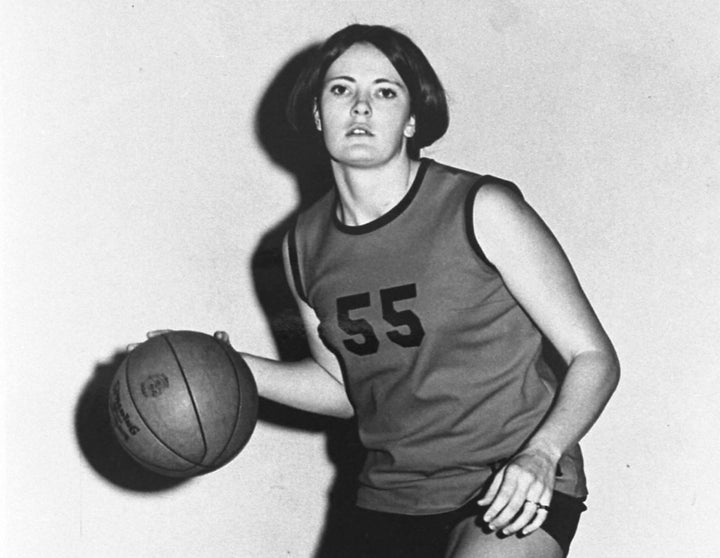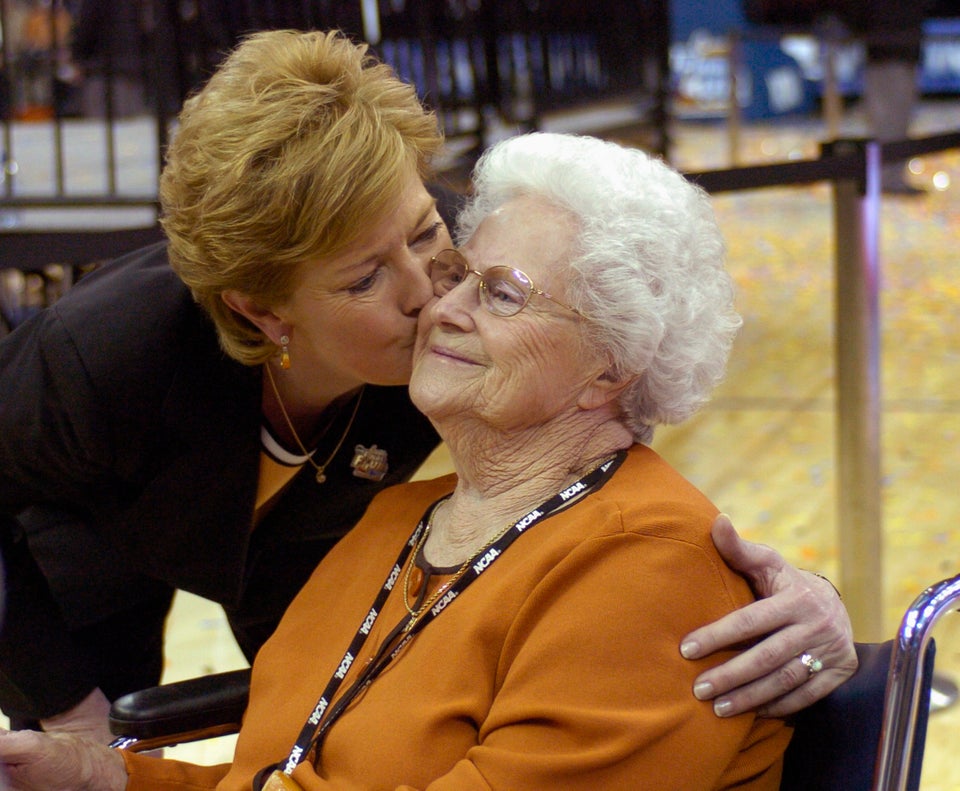
When we think of of Pat Summitt, most of us think of the basketball coach. That makes sense. After all, Summitt spent four decades at the University of Tennessee racking up more wins than any other basketball coach in Division I history, men's or women's.
But before she ever became head coach of the Tennessee women's team, Summitt obtained a distinction of another sort, becoming co-captain of the first U.S. women's basketball team in Olympic history in 1976.
Then known as Pat Head, Summitt led a young and unproven U.S. women's team to a surprising silver medal performance at the 1976 Summer Olympics in Montreal, Canada. As the team's oldest member at 24, her role as a player-coach of sorts injected confidence into her inexperienced teammates.
Summitt died Tuesday morning at 64 after a long battle with Alzheimer's. But last Wednesday, her coach at the 1976 Olympic games, Billie Moore, was able express over FaceTime how important she was to the team, which will celebrate its 40-year anniversary this summer. Summitt's son Tyler let select friends and family know about his mother's grave condition last week, prompting Moore's call. It was the final time Moore would ever see her.
"One thing I wanted to communicate [was] how valuable she was to the Olympics in the role she played and her leadership," Moore told The Huffington Post on Tuesday. "She nodded, and it was a very special moment. I’ll have that memory for a long, long time."
HuffPost asked Moore and three of Summitt's Olympic teammates -- Nancy Lieberman, Gail Marquis and Summitt's co-captain, Juliene Simpson -- to share their memories of Summitt as a player, person and leader. Before Summitt was a Hall of Fame coach, she was a player. And quite a player at that.
I: "She was one very early on who was saying, 'We’re going to do it different'"
Summitt was only 24 years old at the 1976 Olympics, but that was enough to make her the team's oldest player of a young squad. As such, Summitt's leadership was vital to the underdog U.S. team.
Moore: First time I saw her was at a tryout in Fairfield, Iowa, for the World University Games. I had no idea who she was, but I distinctly remember her leadership skills and competitiveness [that] popped out immediately with the first drill.
Lieberman: I really didn’t have any friends -- I was so new [to the team]. Nobody was bad to me, but Pat just had this compassion and understanding.
Marquis: Not the best player on the team, but definitely the grittiest. She led by gritty example.
Lieberman: In the game, what she gave us as a leader was her tenacious attitude to do the little things. Get the rebound. Get the ball to the right person we it needed to get to -- she was a very good passer.
Marquis: She knew we could all be pushed. It wasn’t to be hurtful at all, but all of us -- we can’t reach it by ourselves, and she was there to push you just a little bit further more until you could take it yourself and push yourself. Just to get you over the hump. Not every day is going to be a glorious day.
Simpson: She was one very early on who was saying, “We’re going to do it different. We’re going to find different ways in basketball to challenge people.” It wasn’t so much she had to do it, but we had to do it.
II: "This is someone who rehabbed from a torn ACL on her own"
Summitt tore her ACL during her senior season at the University of Tennessee in 1974, a time when an ACL tear could be a death sentence for certain players. Without many rehab options, she played through it for the Olympic team anyway.
Simpson: There were other members of the selection committee who, when they heard that she had injured her knee, wanted to send her home.
Lieberman: They didn’t have the technology [back then] to be able to get you back. I watched her every day come to practice in pain and just work through it. It was unbelievable. She was so mentally tough.
Moore: This is someone who rehabbed from a torn ACL on her own. They didn’t have a great staff or trainers. In another year, had she not worked how she did, she would not have made the Olympic team. She was determined, and when she set her mind to do something, she did it.
Marquis: She had those stitches right across her kneecap and wore it like a badge.
III: "Well before that glare, that stare"
If Summitt ever needed to send a message, her eyes could do the trick, as some of her teammates soon learned in 1976 and her players would learn later on.
Marquis: Pat’s leadership on the court is what I remember the most -- well before that glare, that stare. She couldn’t use that on us. She wasn’t at that level. Her father Richard gave her that glare. It was definitely formulated in ‘76 though.
Lieberman: When she glared at you and demanded you to do certain things, you did it.
Simpson: She would give them a look of, “We’re doing this.” She knew when not to give that look to somebody who would fall apart.
Moore: I’m sure she glared at me, but when my back was probably turned. She knew better than to glare at me. I’m sure some other Olympics players may say that I taught her the glare.
IV: "Her footprints are permanently involved with where women’s basketball is today"
Summitt died Tuesday. But she will remain an essential part of the past, present and future of those who knew her for a long time yet.
Lieberman: As a mom … Our kids played with each other. We cooked together. I saw so many sides of Pat, but this woman changed women’s basketball and sports forever.
Simpson: She had made an Olympic necklace for me afterwards. I wear that all the time. As she’s gone, I feel like she’s right here with me.
Moore: After you coach for four or five years, there’s not much difference in the technical knowledge between coaches. What separates out are the ones with the ability to teach, motivate and lead. That’s what separated her out ... Without Tennessee there is no UConn. That’s very easy for me to say, but they became the program that everyone wanted to emulate.
Moore: Her footprints are permanently involved with where women’s basketball is today. It’s the greatest impact anyone’s ever had in any sport. But that impact pales in comparison to the impact she had on people’s lives who crossed her path.

